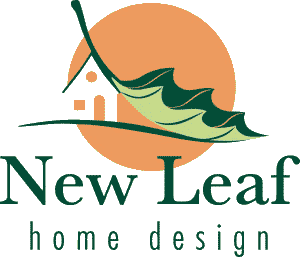If you are just starting to think about a project things can seem a little overwhelming. Where do you even begin? Fortunately, your architect has been here before. We even have a name for this phase, where you may not have a clear idea of what the project should look like. It’s called Programming. At New Leaf Home Design, the programming process starts at our very first meeting, when you begin describing the big picture of what you want to accomplish. Then we typically have a second meeting where I ask for more specifics. As we are talking, you may feel like you are giving me a lot to absorb, but that’s okay! We will probably also jump around from topic to topic, and that’s also okay. I’ll get it organized as I am typing it up for the written program, which you’ll have a chance to review before I start working on drawings. So what can you do to prepare for these first meetings? You don’t really need anything besides the ideas already in your head, but here are a couple of tips.
*Focus on what YOU want
One of the obstacles in planning a home improvement project or new home is the paralysis of possibilities. There is plenty of design advice available these days, from HGTV, Houzz and other websites, and stacks of magazines. In some ways, all this information can make it harder to get started. “Should I use a recycled glass countertop or stick with laminate? Trade Grandma’s table for a breakfast bar around a giant kitchen island?” You want to make your house a more functional and beautiful place for your family to live, not live up to some magazine’s image of what a house should be like. Don’t worry too much about the mythical “resale family” either. If you are renovating or adding on to your home, you probably plan to be there for several more years, so do what you want. It is hard to predict what the resale family will be like. For instance, if you put in a bathtub because you assume that it is better for resale even though you wanted a shower, you won’t be as happy, and you may find the next family would have preferred a shower too.
*Focus on Activities and Imagine Living in your New Spaces
The next step is to think about the activities you’d like to do in your renovated or new home. You could start with a problem like “the dining room is too cramped and isolated from the Kitchen”, and then move on to a description of what you’d like it to be like to sit in the renovated dining room: “We’d like to be able to have 5 people sit at the table on a daily basis, and up to 10 for special occasions. We’d like to be able to talk with whoever is in the Kitchen, and also be able to see the birdfeeder in the backyard. And we want to be able to display our collection of Fiesta dishes.” If you enjoy looking through home magazines or browsing Houzz, saving photos you like can be helpful. They can help to communicate a vision of what you like, even if you aren’t sure how those pictures could apply to your house. Your architect may be able to see connections between the pictures, like the fact that all of the rooms you like in magazines have natural light from at least two directions, or that you prefer painted trim to natural woodwork.
Talk it Through with your Architect
Writing down information yourself is a great start, but talking with your architect can help you to identify more problems and assets, and think through the spaces even better than you could on your own. She can ask questions about issues you might not have thought of: “Do you want wall space over the desk for shelving, or would you rather have a view through here to the living room?” “Where do you keep your compost now? Would it be helpful to get it off of the kitchen counter so you have more work area?” In fact, asking good questions is one of the most important things an architect does.
When you are choosing your archtiect, be sure you are comfortable talking with her and feel that she is listening to what you want. When you work with a professional who is a good listener, you have more control over your project than if you tried to do everything yourself. She will assemble your ideas so you can see how all the pieces fit together. And that makes the completed project look and work even better!
